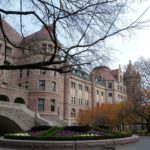Situated like an emerald amongst the blue waters of New York Harbor, Governors Island is a place rich with history that dates back hundreds of years. Off limits to the public for generations, the island has become much more accessible in recent years and is now visited by hundreds of thousands annually. Despite its newfound popularity among New Yorkers and visitors alike, few people truly know the hidden history of Governors Island.
Originally inhabited by the indigenous Lenape Native Americans, the island was rechristened Noten Eylant, or the “Island of Nuts” due to its wealth of chestnut, oak and hickory trees by Dutch explorer Adriaen Block. In May 1624, the island became the landing site for Dutch settlers establishing the New Netherland colony and in many ways, the birthplace of the State of New York. In 1633, the island was established as a military base for the Dutch colonists and was later brought under the control of the British once they rested control of New Netherland and renamed it New York.
In the early stages of the American Revolution, the island was fortified by General Israel Putnam in April 1776, though it was later abandoned and captured by British forces. After the war, the island was brought under the control of New York State and was given its current name in 1784. Later, in 1800, it was ceded to the Federal government in order to better fortify it and protect New York Harbor. Fort Jay, built on the earthworks of an old Revolutionary War fortification, was constructed and completed in 1809 while Castle Williams was completed in 1811. The two powerful forts helped defend New York City in the War of 1812 and were later converted for administrative and training usage after the war. In the Civil War, both forts held Confederate prisoners and once again reverted to administrative usage after the war in the late 19th century.
Governors Island was greatly expanded starting in 1912 using landfill from the construction of the New York City subway. The United States Army, which had controlled the island for years, ceded control to the United States Coast Guard in 1966 before closing its bases on the island down in 1996. However, the island was named a National Monument by President Clinton in 2001 shortly before he left office and was transferred to the City and State of New York in 2003 for a nominal fee of $1.00 with the intention of ultimately redeveloping it for the public.
Governors Island was finally opened up for public usage in 2003 after being off limits for centuries while plans were drawn up in 2007 for the island’s full redevelopment. Since then, the redevelopment has rolled out in several phases and has been widely praised by critics and the public alike. Today, the island offers tours of its historical landmarks as well as concerts, art displays and other cultural events.
Once forbidden to the public, the Governors Island of today welcomes hundreds of thousands of visitors annually. Throughout its long and interesting history as both a military base and public park, the island has continued to play a key role in New York City’s history and will continue to do so for years to come.





